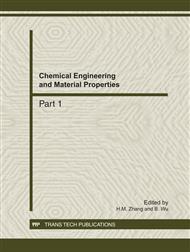p.1075
p.1080
p.1085
p.1090
p.1095
p.1100
p.1105
p.1109
p.1113
Comparison on Effect of Alternating and Stationary Magnetic Field on the Conductivity of NaCl Solutions
Abstract:
NaCl solutions of different concentrations were exposed to alternating and stationary magnetic fields. The conductivity change of the NaCl solutions was measured. The change of the conductivity of the NaCl solutions under different amplitudes magnetic fields was studied. The differences of effect between stationary and alternating magnetic field on the conductivity of the NaCl solutions was compared. The principle of the effects of magnetic fields on conductivity of NaCl solutions was discussed. The process of magnetic moment deflexion effected by the alternating magnetic field was analyzed, which explained the experimental results that the conductivity was increased more larger when then the NaCl solutions were exposing to alternating magnetic field than stationary magnetic field.
Info:
Periodical:
Pages:
1095-1099
Citation:
Online since:
December 2011
Authors:
Price:
Сopyright:
© 2012 Trans Tech Publications Ltd. All Rights Reserved
Share:
Citation:


